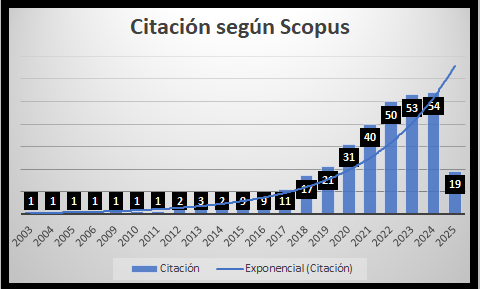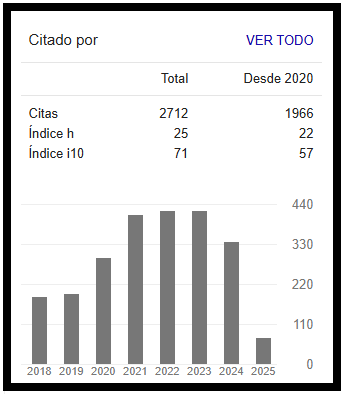The role of manufacturer brands in the face of social demands. Analysis of “Negrita” re-branding advertising by Alicorp
DOI:
https://doi.org/10.24265/cian.2020.n12.05Keywords:
Brand positioning, Brand purpose, Social change, Stereotypes, AlicorpAbstract
Based on the analysis of Alicorps’ official statement regarding the renaming of their commercial brand Negrita, this article suggests delving into the reasons why brands have begun to take political stands through their discourse and actions, and how this decisions have an impact on the commercial and manufacturers’ brand equity as well as their consumers. Albeit interest regarding role portrayals in advertising is not a new issue, “¿is it possible that brands and advertising have embraced a new role as social actors?, “¿are societal changes so powerful that they call for a brand to take a political stand towards them?” Through on the outcome of these questions, and through this cases’ discussion, this study seeks to explore the roots and consequences of this new brand positioning.
Metrics
Downloads
References
Aaker , J. , Fournier , S. y Brasel , A. ( 2004 ) . When Good Brands Do Bad. Journal of Consumer Research, 31, 1- 25.
Aaker, D (2010). Building strong brands. Pocket.
Ahluwalia, R., Swaminathan, V. y Stilley, K. (2009). When Brand Personality Matters: The Moderating Role of Attachment Styles. Journal of Consumer Research, 35, 985-1002.
Ahuvia, A. (2005). Beyond the Extended Self: Loved Objects and Consumers. Identity Narratives, Journal of Consumer Research, 32, 171-184.
Alicorp (2018). Reporte Anual. https://www.alicorp.com.pe/media/PDF/Alicorp_Reporte_2018_compressed_-1_W28nuxu.pdf
Alicorp (2019). Memoria Anual Consolidada. https://www.alicorp.com.pe/medi/PDF/Memoria_Anual_-Consolidada_2019.pdf.
Alicorp (2020). Alicorp cierra el 2019 con resultados positivos. Recuperado de https://www.alicorp.com.pe/pe/es/noticias/alicorp-cierrael-2019-con-resultados-positivos/
Alicorp (2020). Comunicado de cambio de nombre de marca Negrita. Alicorp. https://www.alicorp.com.pe/pe/es/noticias/porinclusion-y-diversidadnegrita-cambia-de-nombre-e-imagen/
América Economía (2019) Estas son las 500 empresas más grandes del Perú 2019. https://www.americaeconomia.com/negocios-industrias/estas-son-las-500empresas-mas-grandes-del-peru-2019
Antón, R. (2015). Participación horizontal y abierta en la red: Cocreación en racimos. Disponible en UNED. Recuperado de http://espacio.uned.es/fez/eserv/tesisuned:EducacionRanton/ANTON_CUADRADO_-Raul_Tesis.pdf
Aron, A. &Aron, E (1996) Love and the expansion of the self: The state of the model. Journal of Analytical Psychology, 3,45-58. https://doi.org/10.1111/j.14756811.1996.tb00103.x
ARELLANO (2017) Aportes a los cambios sociales. https://www.arellano.pe/aportes-los-cambios sociales/
Arellano, R. (2017) Dónde quiero trabajar 2017. https://elcomercio.pe/opinion/rincon-del-autor/quiero-2017-rolando-arellano-noticia-473329-noticia/
Avery, J., Breazeale, M., y Fournier, S.(2015). Strong brands, strong relationships. Routledge, Taylor & Francis Group,
Barrenzuela, I (2020). ¿Qué opinan los líderes de la industria sobre el rebranding de ‘Negrita’? Mercado Negro. https://www.mercadonegro.pe/branding/que-opinan-los-lideres-de-la-industria-sobre-el-rebranding-de-negrita/
Bechara, A., Castaño, R., Reimann, M., y Zaichkowsky, J. (2012) How we relate to brands: Psychological and neurophysiological insights into consumer–brand relationships. Journal of Consumer Psychology, ,22,128-142. https://doi.org/10.1016/j.jcps.2011.11.003
Blackston, M. (1992). Observations: building brand equity by managing the brand's relationships. Journal of Advertising Research, 32, 79 – 83.
Breazeale, M y Fetscherin, M., y Fournier, S. (2012). Consumer-brand relationships:theory and practice. Routledge.
Bruns, D., Fischer, A., Langner. T., y Rossiter, J.R. (2014). Falling in love with brands: a dynamic analysis of the trajectories of brand love, Marketing Letters, 27,15-26. https://doi.org/10.1007/s11002-014-9283-4
Cano, L. y LLorca, G. Espacio y tiempo en el siglo XXI: velocidad, instantaneidad y su repercusión en la comunicación humana. Revista Científica de Comunicación, 6, 219-233.
Castells, M (1997) Local y global. La gestión de las ciudades en la era de la información. Taurus.
Centro de Desarrollo Étnico. (2020). Caso producto “Negrita”. http://cedetperu.org/index.php/prensa/item-/145pronunciamiento-caso-producto-negrita
Dafonte-Gómez, A. (2014) Claves de la publicidad viral: De la motivación a la emoción en los videos más compartidos. Comunicar. Media Education Research Journal, 22, 199–206. https://doi.org/10.3916/C43-2014-20
Eirini,T. y Zotos, Y (2014). Female Stereotypes in Print Advertising: A Retrospective Analysis. Procedia - Social and Behavioral Sciences,148, 446-454. https://doi.org/10.1016/j.sbspro.2014.07.064
Eisend, M. (2009) A meta-analysis of gender roles in advertising. Journal of the Academy of Marketing Science 38, 418–440. https://doi.org/10.1007/s11747-009-0181-x
Esté, A. (2020). De Aunt Jemima a Juan Valdez: cómo reinventar las marcas en tiempos de crisis. New York Times. https://www.nytimes.com/es/2020/07/09/espanol/opinion/marcas-racismo-latino-america.html
EY Beacon Institute (2017). How can Purpose Reveal a Path through Disruption? Mapping the Journey from Rhetoric to Reality. https://www.ey.com/Publication/vwLUAssets/ey-how-can-purpose-reveal-a-path-throughuncertainty/$File/ey-how-can-purpose-reveal-a-path-through-uncertainty.pdf
Felder, Dane. (1999). Comunicación Para el Cambio Social. Documento Programático e Informe sobre una Conferencia Bellagio. Nueva York, EUA: Rockefeller Foundation. http://grupocomunicaciones.files.word-press.com/2009/02/comunicacion_para_el_cambio_social.pdf
Fish, J. (2016) Make An Impact, Your Guide To Inclusive Marketing. https://www.forbes.com/sites/womens-media/2016/06/29/make-an-impact-your-guide-toinclusive-marketing/
Fournier, S. (1994). A consumer-brand relationship framework for strategic brand management. (Tesis doctoral). University of Florida.
Fournier, S.(1998). Consumers and Their Brands: Developing Relationship Theory in Consumer Research, Journal of Consumer Research, 16, 343-353. https://doi.org/10.1086/209515
García Avilés, J. A. (2015). Comunicar en la sociedad red: Teorías, modelos y prácticas. UOC.
Kelly, S. E. (2012). Examining the Role of Perceived Immediacy as a Mediator: Revisiting the Relationships among Immediate Behaviors, Liking, and Disclosure (Tesis doctoral). University of Tennessee.
Kotler, P., y Keller, K. (2012) Marketing Management. Pretince Hall, Pearson.
Livingstone, S (2019) What brand purpose really means and why it matters. https://blog.globalwebindex.com/marketing/brandpurpose/
Holbrook, M., y Westwood, R. (1989). The role of emotion in advertising revisited: Testing a typology of emotional responses. Cognitive and affective responses to advertising, 3, 353–371.
IPSOS. (2018). 1 Encuesta Nacional. Percepciones sobre diversidad cultural y discriminación ético racial. https://www.ipsos.com/sites/default/files/ct/news/documents/201803/percepciones-sobre-diversidad-culturalydiscriminacion-etico-racial.pdf
IPSOS.(2019). Peruano Pingüino. https://www.ipsos.com/es-pe/peruano-pinguino
Ministerio de Cultura. (2018). Resultados de la I Encuesta Nacional Percepciones y actitudes sobre diversidad cultural y discriminaciónétnico-racial. https://www.gob.pe/institucion/cultura/noticias/4975-un-53-considera-que-peruanosson-racistas-o-muy-racistas-pero-solo-el-8-se-percibe-asimismo-comoracistaomuy-racista
Media Ownership Monitor Peru (MOM). (2018) Impresos. https://peru.momrsf.org/es/medios /prensa/
Miranda, O. (2020). Las ‘negritas’ de la publicidad peruana. https://larepublica.pe/domingo/2020/06/28/las-negritas-de-la-publicidad-peruana/
Mobolade, O. (2016) How to market effectively to Millennials. Warc Best Practice. https://www.iabswitzerland.ch/wpcontent/uploads/2016/06/millwardbrown_article_how-to-market-effectively-to-millennials.pdf
Monitor Empresarial de Reputación Corporativa. (2019). Ranking de evaluación reputacional 2019. https://www.merco.info/pe/ranking-merco-empresas
Muñoz, R. (2014) Ministerio de la mujer y poblaciones vulnerables. Afroperuanas. Situación y marco legal de protección de sus derechos. https://centroderecursos.cultura.pe/sites/default/files/rb/pdf/05.pdf
Navarro, M. (2020) Comunicación horizontal e interactividad. Estudios multidisciplinarios en comunicación audiovisual, interactividad y marca en la red, 2, 97-112.
Perú Retail (2017) Interbank y Alicorp son reconocidas como las mejores empresas para trabajar en el Perú. https://www.peru-retail.com/interbank-alicorp-reconocidas-mejores-empresas-trabajar-peru/
Raffino, M. (2020) Comunidades virtuales. https://concepto.de/comunidadesvirtuales/#ixzz6WO5UcIje
Rushkoff, D. (1994). Media Virus. Ballantine.
Sainz de Medrano, V. M. (2017). De vertical a horizontal. De la comunicación de masas a la comunicación masiva (Tesis Doctoral). Universidad Complutense de Madrid, Madrid, España. https://eprints.ucm.es/41708/1/T38559.pdf
Schwigel, C. (2019) Comunidades digitales y comunidades humanas: las redes y la importancia del rol de comunicadores y constructores sociales. Punto de Encuentro, 10, 4-8.
Segarra-Saavedra, J. e Hidalgo-Marí , T. (2018). Viralidad e interacción. Análisis del engagement de los diez anuncios más vistos en YouTube en España en 2016, Icono 14, 16, 47-71.
Sibilia, P. (2006). El hombre postorgánico: cuerpo, subjetividad y tecnologías digitales. Fondo de Cultura Económica.
Tirado, J. (2020). Caso Negrita: La oportunidad más allá del cambio de nombre. https://www.mercadonegro.pe/columna/caso-negrita-la-oportunidad-mas-alla-del-cambio-de-nombre/
TVPerú Noticias [@perunoticias]. (2020, 22 de Junio). Marca Negrita cambiará de nombre. [Imagen adjunta][Tweet]. Twitter. https://twitter.com/noticias_tvperu/status/1275412586025168899
Uche, S. (2018) Generation Z and Corporate Social Responsibility (Tesis) Syracuse University.
Downloads
Published
Issue
Section
License
In case the manuscript is approved, the authors retain the copyright and assign to the journal the right to publish, edit, reproduce, distribute, display and communicate in the country of origin and abroad by means of print and electronic media in different databases.
In order for this procedure to be recorded, the author must fill out the following formats:
Format 1 - Author data Format.
Format 2 - Affidavit on originality and authorization for the publication of articles Format.
Format 3 - Open Science Compliance.








2.png)


















